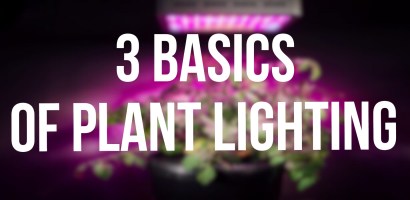 While gardening indoors brings its many advantages, it also requires finding a light source for your garden. Not all plant lighting is same, as they can come in different intensity and spectrum’s that plants need at certain stages of their growth. Here are the 3 basics of plant lighting for a hydroponic garden.
While gardening indoors brings its many advantages, it also requires finding a light source for your garden. Not all plant lighting is same, as they can come in different intensity and spectrum’s that plants need at certain stages of their growth. Here are the 3 basics of plant lighting for a hydroponic garden.
The Color Spectrum
Plant lighting comes in different spectrum’s that are measured by temperature in Kelvin. Lighting that is 3,000K and below are warm colors (red) and colors above 5,000k are cool colors (blue). Plants require different spectrums of light at different stages of their growth. During the plant’s vegetative stage, it requires what blue colors which most resemble natural sunlight. Red light is required for the flowering stage of the plant’s growth. Some light is dual spectrum which gives off both red and blue light.
How Long Should Plants Be Under Light
The amount of time needed depends on the plant, but most vegetables need 12 or more hours of light for good growth. Some plants stay in vegetative stage until the light duration is decreased. Decreasing the light replicates the days getting shorter, which signals to the plant that is it’s time to flower and produce fruit. When setting your light duration, try to mimic the amount of light that plant would receive in nature for whatever stage the plant is in.
How Far Away The Light Should Be From Plants
Have you ever seen seedlings that were tall and lanky that eventually couldn’t hold themselves up? This is caused by the light not being intense enough. Some plants can do well in low light and may be burned up when the light gets too intense. Other plants may need high-intensity light for their good growth. Light is used for photosynthesis, so generally speaking, better light more plant growth. There are some negative effects of too much light intensity. When light is too intense chlorophyll content is reduced which decreases the rate of photosynthesis, slowing plant growth.







